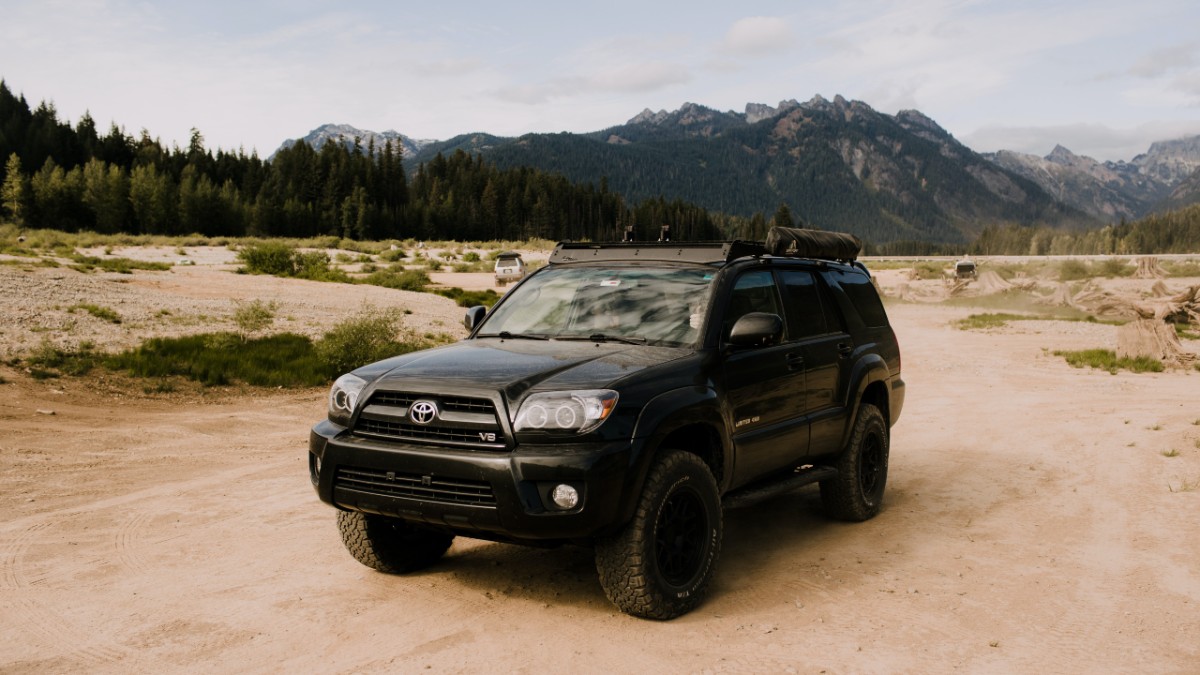Ever wondered how a car is able to stay completely motionless even when parked on a hill or slope? This is possible because of the parking brakes. All vehicles come with parking brakes, sometimes referred to as emergency brakes, and this article focuses on where to find the parking brake on a Toyota 4Runner.
The 4runner parking brake is located on the left of the brake and gas pedals. To adjust it, you’ll need to locate the parking brake adjuster and adjust it.
If you already own a 4runner or any other vehicle, we expect you already know where your parking brake is located. If not, you have no business being on the road. For those that don’t own a 4runner or aren’t familiar with parking brakes, you’ll learn about them below and where you can find them in a 4runner and in any vehicle in general. So, here we go.
Parking Brake Explained
The parking brake functions as its name imply – it helps you keep your vehicle completely still when parked. So, it’s highly recommended you engage the parking brake when parking, especially on a steep hill or slope.
As we mentioned earlier, parking brakes are also referred to as emergency brakes, and this is because they were initially designed to act as a backup brake and stop a car when the primary brakes fail. This is why parking brakes have a different mechanism from the primary braking system.
However, parking brakes are almost exclusively used for parking nowadays since the braking power of modern cars’ parking brakes is far below that of the primary braking system. We’ll get into how parking brakes work later in this article, but for now, we’ll be discussing where to find a parking brake on a Toyota 4Runner.
Where To Find Parking Brake On A Toyota 4Runner?
Parking brakes are typically located between the front two seats of a car or to the left of the brake and acceleration pedal. In Toyota 4Runner, you’ll find the parking brake in the latter position, which is the left of the brake and acceleration pedal.
For those not familiar with Toyota 4Runner, it’s a line of SUVs produced by Japanese carmaker Toyota since 1984. There have been five generations of the Toyota 4Runner. The name ‘4runner’ was derived from ‘fore runner’ since this line marks Toyota’s first sports utility vehicle with a four-wheel drive.
One of the main reasons behind the popularity of the Toyota 4Runner is its reliability. With proper maintenance, a 4runner model can easily cross 300,000 miles. Even without proper care, you can still depend on a 4runner crossing 200,000 miles. The maintenance cost of a 4runner is also less than that of many car models. And this means this line of Toyota cars can offer significant savings to car owners.
Another reason why people like Toyota 4runner models is due to their off-roading capabilities. Thanks to the sturdy build of 4runners, they can stand up to the harsh conditions of the wild. There are also several features that make offroad navigation easier with 4runers. You have the four Multi-Terrain select off-roading driving modes, Kinetic Dynamic Suspension System (KDSS), downhill assist control, crawl control, active traction control, and hill start assist.

How A Parking Brake Works
Your parking brake system is completely different from your primary braking system, and this is why you can still get some braking power from the parking brake if the primary brakes were to fail. Contrary to the primary braking system that uses a hydraulic system, the parking brake uses a mechanical system made of levers and steel cables.
Whenever you step on the parking brake pedal, the cables of the system transmit the force required to slow your vehicle, keeping it in place to the drum brakes located on the rear wheels. In any given situation, the parking brake will always bypass the hydraulic braking system to function.
How To Adjust Your Parking Brake
Ideally, you should let your mechanic adjust your parking brake. If you want to adjust it yourself, first familiarize yourself with your car’s specific parking braking system. While the method of adjusting parking brakes is similar amongst different car models, design variations due to manufacturers mean there may be two or three points of adjustment, depending on your manufacturer.
Generally, parking brakes are self-adjusting. But sometimes, this self-adjusting principle can fail, thereby necessitating the need for manual adjustment.
The first thing to do when you want to adjust your parking brake is to lift your vehicle, and the materials needed for this include jack stands, brake spoons, wheel blocks, floor jacks, and open-end wrenches.
After lifting your car, the next step is to locate the brake cable adjuster, which can be found in either of two places depending on your car’s model or manufacturer – under the car about midway between the front and the rear or attached to the parking brake lever.
If the parking brake lever is to be engaged or disengaged by foot, it’ll be mounted to the driver’s left. On the other hand, if it is to be engaged by hand, you’ll find it at the driver’s right in the center console.
Turn the self-adjuster counterclockwise to provide just enough slack. If you are having difficulty with this, refer to your owner’s manual for instructions on how to do this.
Perhaps the most difficult part of this process is the adjustment of the parking shoe brakes. How you do this depends on the type of parking brake system that comes with your car.
Does The 4Runner Have A Good Resale Value?
One of the best things about 4runner is its excellent resale value. You can easily expect to get up to 60% of the amount you bought the 4runner, depending on how well-maintained it is. As a result, the 4runner is a good investment.

